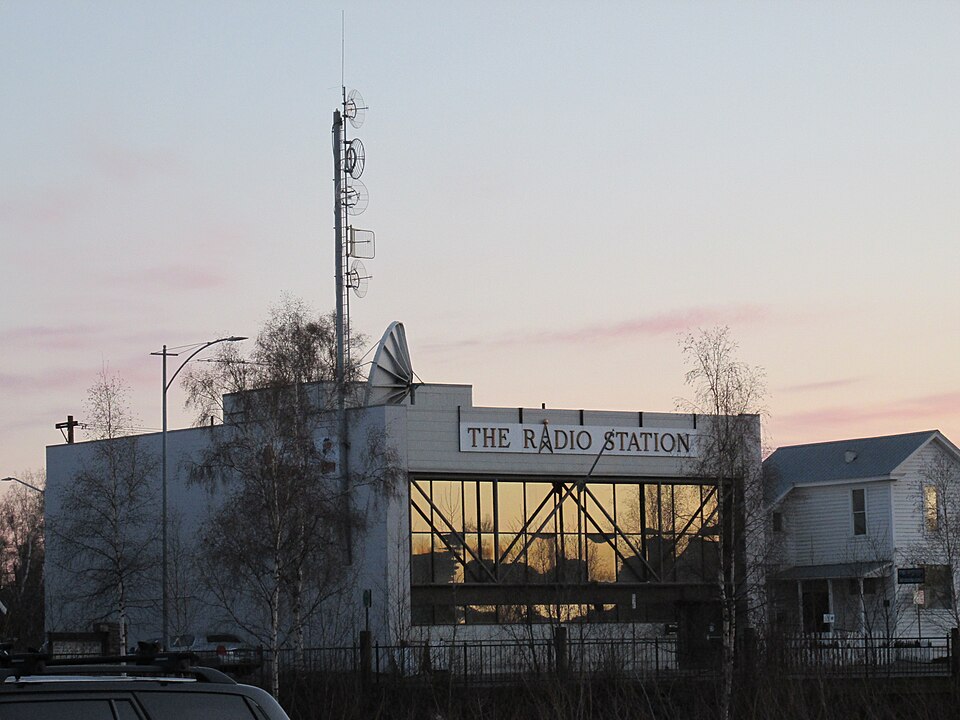How Some Independent Radio Stations Avoid Sounding Like Corporate Drones
Local radio stations and digital networks of independents are keeping “human-driven, anti-algorithm expression” alive.
Before 1996, the Federal Communications Commission (FCC) restricted U.S. corporations from owning more than 40 radio stations. The Telecommunications Act of 1996 eliminated these curbs, enabling single corporate entities to own unlimited stations.
At that point, listeners “said goodbye to regionality and creativity and hello to bland, homogenized programming,” filmmaker Brendan Toller noted in his 2008 documentary I Need That Record!
Corporate networks continue to dominate the airwaves. BIA Advisory Services reports that iHeartMedia owned 870 stations in 2023, making it the nation’s top radio owner, followed by Audacy, Cumulus Media, Hubbard Radio, and Beasley Media Group.
“It’s monopoly after monopoly,” notes Toller, now the director of operations and new initiatives at the volunteer-run WPKN, one of about 100 independent radio stations in the U.S., according to Wikipedia. “I think the call to independence and a free-form format is important as things become more homogenized, influenced by AI, and automated.”
Founded in 1963, WPKN is a 10,000-watt station in Bridgeport, Connecticut. Its terrestrial signal reaches a potential 1.5 million listeners in most of Connecticut and parts of Long Island, New York State, and southwestern Massachusetts. Millions of listeners worldwide have access to its broadcasts at WPKN.org.
Toller says WPKN hosts about 170 programs. The content of these broadcasts includes music, news, public affairs, arts and culture, environment and science, and lifestyle.
Besides talented local DJs, the station looks for “organizers and activists who want to highlight people making their communities better in the public affairs realm,” Toller states.
WPKN’s DJs, programmers, and hosts have full autonomy. “Our schedule is the ‘you never know what you’re going to get’ chocolate box of radio,” Toller says. “We don’t have the playlist requirements that an obnoxious corporate station has. We are where freedom and human-driven, anti-algorithm expression lives. That, to me, is more exciting than a curated playlist because you get the personality [of the DJ] drifting and guiding you toward all this music or information if it’s a public affairs program or podcast.”
He adds that independent stations like WPKN enable local musicians, artists, nonprofits, and organizers “to reach a wider audience [and] to get contextualized properly within their region, the times, and history.”
In April 2025, NPR stated that the Trump administration’s proposed cuts to federal funding for the Corporation for Public Broadcasting “would have a devastating impact on American communities across the nation that rely on public radio for trusted local and national news, culture, lifesaving emergency alerts, and public safety information.”
While Toller notes that such cuts will be “major and grave,” they do not pose a threat to WPKN, which does not receive any federal funding. “The station has remained largely listener-supported [since 1989], with a hint of underwriting from local nonprofits, organizations, and businesses,” Toller explains.
Unlike WPKN, which is unaffiliated, some local stations disburse their content through independent networks like the Pacifica Foundation, which owns and operates non-commercial stations KPFA, KPFK, KPFT, WBAI, and WPFW. It also oversees the Pacifica Network, which provides content to more than 200 stations, according to the network’s website.
Meanwhile, the nonprofit, volunteer-run indie radio network A-Infos Radio Project presents “an alternative to the corporate and government media, which do not serve struggles for liberty, justice and peace, nor enable the free expression of creativity,” according to its website.
The freedom of expression that terrestrial radio offers may help explain this medium’s enduring popularity despite competition from online outlets.
“Sparked by the advent of social media in the early 2000s, the landscape of communication underwent a monumental transformation,” the International News Media Association observed in 2024. “This was further accelerated by the global lockdowns of 2020, where the demand for instant, online news reached unprecedented heights, highlighting the growing preference for short-form content among audiences.”
Sound of Life, a platform designed “to foster a community of curious connoisseurs and share stories through the lens of sound,” states that indie radio stations have grown in popularity despite challenges like overhead costs and rising rents. “During the pandemic, the… [number] of radio and podcast listeners boomed, and habits stick. In the U.S., 92 percent of the population listen to [the] radio every week,” stated a 2024 article on its website.
This boom may have helped several independent radio stations in the U.S. survive challenges that wiped out many British stations, including soaring living expenses and energy bills.
Indie stations like WBHF, Aggie Radio, WFMU, KUCR, KEXP, the SoCal Sound, and Rinse FM have adapted to industry shifts by offering multiple streaming options. WPKN has also embraced the digital format. Besides posting content to its website, it maintains a podcast channel on all major platforms, an archiving system, and a video sessions format.
Toller says he has witnessed a surprising amount of interest in traditional radio among young people. “What’s amazing to me is that the youth are being raised with these digital devices that are so attention-commanding all the time, and I see people coming in here from other stations who are much younger than me and are interested in this as a tried-and-true platform that has existed far longer than social media. If youth is still interested, that tells me this is going to be around for another 60 years.”
He adds that a highlight of his work is hearing “a great demo tape that has something we don’t have on the air yet [such as] underground electronic music or a food justice podcast. These are all being submitted by my peers and people younger than me. That, to me, is inspiring and a salve to independent media. I’m still excited.”



